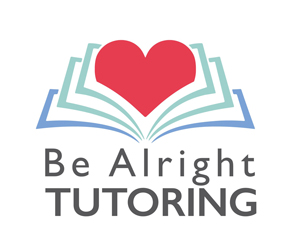Quick tip: Buy a stack of colorful index cards and use them to represent blocks.
I often hear parents complain, worry, and kvetch about how much time their kids spend gaming. This is especially true for kids with attention challenges and on the autism spectrum. What if, however, we use games, like Minecraft, to our academic advantage? What if we use the vast knowledge your kids have for Minecraft to build something like, I don’t know, a school project?
Minecraft 101
Minecraft is published by Mojang, which is a part of the Xbox Game Studio. Originally developed by Swedes Jens Bergensten and Markus Persson in 2010, Minecraft is a sandbox video game giving gamers the ability to build houses, landscapes, and whole communities out of virtual blocks.
These communities can be intricate and require gamers, often children under the age of 10, to understand basic computer coding and some increasingly sophisticated building protocols. More importantly, kids learn how to break these rules with gamer hacks.
For instance, digging too deeply may mean you reach deadly lava. Gamers can avoid dying by carrying a bucket of virtual water.
So, if your kids can navigate a complicated computer world without dying, why can’t they get their homework done?
Use the obsession folks. No, I don’t mean have your kids design your next home -although you probably could save thousands on an architect.
Whether your kids struggle in math or writing, use Minecraft to your advantage.
Minecraft foundation
Minecraft operates on a basic premise. Anything can be built on a solid foundation. And, like Minecraft, academic subjects also require a solid foundation. School projects, in particular, really benefit from the Minecraft comparison. Good planning is important for any successful project.
If you child is feeling overwhelmed, for instance, with an upcoming science project, use the Minecraft analogy. Ask them to break down the project into blocks. Lay your index cards out on a table and ask them to begin building a wall using five to six cards in a row closest to you.
What should go in the first row of blocks?
Maybe the first block contains, “Choose an experiment and get teacher’s permission.” Write this on the first index card. The second block could say, “Go to library and pick four resources for experiment and paper.” The third block could say, “Map out steps of experiment.”
From a visual standpoint, your kids will begin to see how steps like a trip to the library is just as important as the experiement itself. In fact, without the trip to the library, the experiment can crumble under the weight of the other steps.
Center of the wall or virtual building
Just about any school project can adapt to the Minecraft structure. A research paper, book report, history test, science presentation, etc. All projects have a foundation, middle, top of the structure, and details to complete.
If the science project mentioned above has four to five foundational blocks, most other school projects will too. For a research paper, the blocks may include: Pick a topic, go to library for five sources, create index cards with facts, arrange index cards/paper in order with introduction and conclusion at end.
Great! Now there’s a foundation, just like Minecraft. Next up, build the center of the wall or the part just above the foundation. For a science project, this entails the actual experiment. For a paper, this includes the body paragraphs or the actual writing.
Always map it out beforehand. For the research project, blocks could include: Paragraph one, paragraph two, paragraph, three, paragraph four.
If you are using index cards as blocks, make sure to have your child add a big “X” on each completed block. Laying these out on the kitchen table will give them a sense of accomplishment as steps are completed.
Finishing the details
Every Minecraft village or house requires details like furniture, pictures, roads, and more. If you’ve followed along so far, your child should have a foundation of index cards marked with a big “X.” Yay! Celebrate the accomplishment.
Now it’s time to finish the project. Details could include typing the project into the computer. Maybe they’ve turned in the rough draft and it’s time to clean up the final copy.
Things like punctuation, paper format, graphics, bibliography, etc. should all get labelled detailed. If your structure looks top heavy, add a few blocks to the foundation. Kids on the autism spectrum may fuss about a lack of symetry. Have them search for steps they took in the beginning, which may not have a card.
Make sure to include a “Turn the project in!” card.
Final step: Save all these cards for the next project. You and your child have a template now for big projects.
Final nod to Minecraft
Math requires a foundation of subtraction, addition, multiplication, and division. Algebra requires fundamental formulas. Biology requires a basic understanding of classifications. And, writing requires basic understanding of the parts of speech.
For the child with logical thinking and a knack for games like Minecraft, modelling academics after building basics can have remarkable results.
While the parts of speech can seem illusory and intangible, the idea of blocks resonates for most children.
In addition, pay attention to how your child builds. Does she take it one room at a time? In this case, maybe projects/papers would be easier broken into clear segments. In this case, one index card could be labelled “Paragraph One” and have cards underneath with all the pieces parts making up that paragraph. Once she tackles this group, move onto paragraph two.
Whatever your method, relax into the game they love. Use it to your advantage. And, make sure to reward the hard work with a game YOU participate in. Grab the controller and join them as a means of reward.

